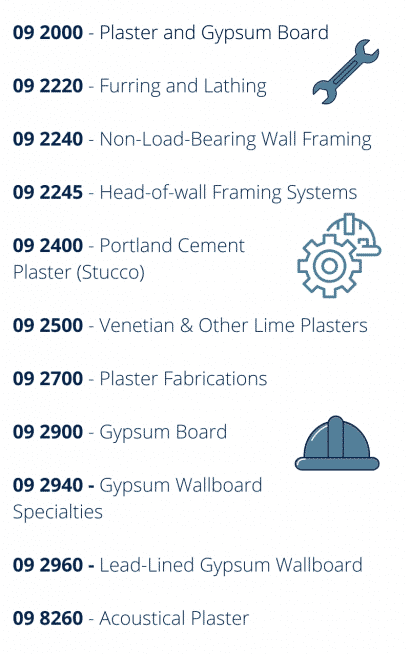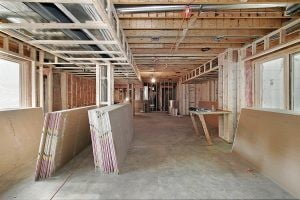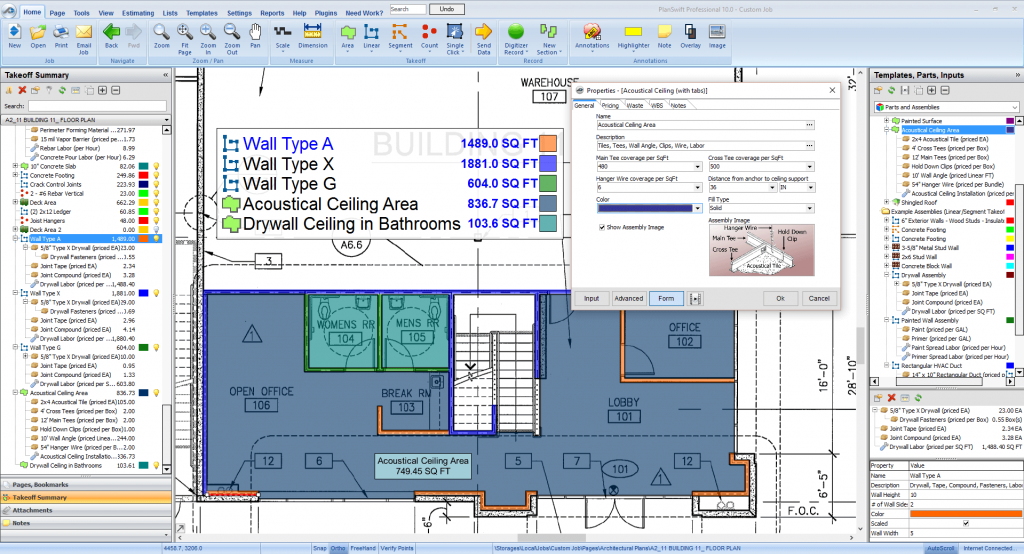Drywall Takeoff Service
Drywall Trade-CSI Code 9 Finishes: 09 2000 – Plaster and Gypsum Board
As a company offering drywall installation services, you’re always looking for ways to take your business to the next level of success. Well, it is without a doubt that your reputation for good quality work matters a lot in earning you a business in drywall trade but at the same time accurate and on-spot quotes and estimates will give your business a definite boost. Let’s review the drywall trade, the drywall estimating process, and also how Construction Estimating can help you!
Any homeowner or construction company, who might be interested in hiring you for drywall installation, will be pretty much interested in knowing how much drywall is needed for his / her project. This is, the first step and the clients are pretty eager to get accurate measurements for their readings as their decision of whether to go ahead with the project or not depends a lot on your estimate.
Another reason why your estimates have to be on-spot is that many homeowners have already done their homework before giving you a call to quote. So, mistakes at this stage will kill your chance of earning a project. Besides this, there are many online drywall calculators and estimators available to help them with this reckoning.
Here is our guide for drywall installation service providers and contractors to deal with this heck. Feeling convinced? Okay, but before we move on to the core topic of today’s blog, we want to start with the basics of drywall trades.
Drywall Description of Trade
It is needless to discuss the popularity of drywall construction across the globe and its exciting history. Due to its cost-effectiveness and ease of application, it has become the most common wall-covering material in most parts of American and Europe.
Drywall panels can be installed and removed easily as it can be cut in all sizes. Unlike plaster render, you don’t even have to wait for the curing process. Modern drywall plasterboards are fire and moisture resistant.
With that being said, your chances to excel in the drywall construction business are pretty bright. However, you need to take care of a unique set of project management challenges. With more projects coming up, you may face worker shortage as there are not many trained individuals out there.
Besides this, you need to incorporate your project management skills to cope with the time constraints and deliver the project well on time. You need to keep an eye and stay up-to-date about every changing government regulations that require you to devote time.
Alongside, there is a massive number of documents and files you need to organize and consolidate for record purpose and further usage while claiming for any untoward situations. With so many business challenges already, you also have to keep hunting for new business opportunities.

Accurate drywall takeoffs are not only important for you to get new projects but are also required to allocate labor and your material stock accordingly. Let’s explore how professional takeoff estimators undertake the process of estimating drywall projects.
Common Drywall Types
Before we can start with our estimating guide, it is important to know about the different drywall types.
Here’re some common drywall styles:
1. Regular whiteboard: It is a common drywall type that is fire-resistant and is also known as Type-X. It is a regular whiteboard that comes in thickness between ¼” and ¾”. With a different number of layers and thicknesses, you can choose an appropriate one keeping in view the required fire rating.

2. Another common type is the green board drywall. It derives its name from green-colored paper that is famous for deflecting water and is mostly used around wet areas of the house like bathroom and laundry.
3. For areas where you need water and mold resistance, the blueboard type has a lot to offer.
4. Other types include cement board, soundboard, mold-resistant, and enviro-board.
Common Drywall Thickness and Sizes
Knowing common drywall thickness and sizes will help you a lot in your estimation and takeoff jobs. In most common cases the width of a drywall sheet is 4 feet. It is pretty uncommon for a drywall sheet to be of different width. The most common size of the drywall sheet is 4 ft x 8 ft. Therefore, commonly the length is 8 feet.
General Drywall Estimating Process
Step No. 1
Review your plans and specifications, so that you can understand what areas will need drywall. The first step in the general drywall estimating process is to measure the square footage of the areas where the drywall will be installed. So, take the tape and measure all dimensions of your house. If the areas are simple rectangular, you can easily multiply width times the height of each wall or ceiling area. You can also take the perimeter of the room and multiply it with the height of the wall. If the wall is in slope, you need to consider the greatest height. In the end, add all the quantities together to know the total square foot amount. For roof areas, the same process will be followed. If the roof is triangular, the area will be base multiplied by height divided by two.
For more accuracy, you need to incorporate the areas of the room where the drywall will not be required. These are areas of openings like doors, windows, and ventilators. So, you just have to calculate the area of each opening and subtract that from the above total square footage to get the net area where the drywall will be installed.
Step No. 2
The next step is to calculate the number of sheets required for drywall. At this stage, you should be sure about the type of drywall sheet you’ll be buying. If you need a 4 ft x 8ft sheet you need to divide the total square footage by 32. But for 4 ft x 12 ft sheets the same process will be with 48 square feet.
The result will be the total number sheet required for the project. It is always a good practice to add 10 to 15 percent for waste and odd cuts. For a cost estimate, you can multiply the total number of sheets by the price per sheet and adding that with tax and delivery charges.

Step No. 3
For estimating the drywall tape required for the job, you need to multiply the perimeter of each sheet to determine the linear feet of joint tape for the drywall. For 4×8 feet the perimeter is 16 feet and for 4×12 feet sheet, the perimeter is 20 feet. So, just multiply the number of sheets with the perimeter to know the length of tape required. For several rolls of tape just divide the total length by 500 feet as each roll has 500 meters of tape.
Step No. 4
As a general rule, for estimating the joint compound, just multiply the total square footage with 0.053 to get the amount of compound in pounds.
For screws, divide the square footage by 300 and you’ll get the pounds of screws needed.
For corner boards, here’s how you can proceed. Just count the number of outside wall corners in the entire project. Afterward, plan on using one full corner bead for each corner.
In the end, don’t forget to incorporate your profit and overhead in the estimated cost. Most companies set their profit between 10 to 20 percent but it depends on the location and size of the job.

Best Software for Drywall Digital Takeoffs
The drywall estimating process is not that simple and straightforward as it seems. You’re not always lucky enough to get floor plans with rectangular areas. The figures can be pretty complex at time and manual calculation will take much more time then multiplying two figures. In such cases, you don’t have a mess around figures and solving complex equations i.e. you can make use of the latest estimation software like Planswift. The software has built-in functionality where you can simply point and click to measure walls, ceilings, and partitions.

We are a proud Planswift Partner!

